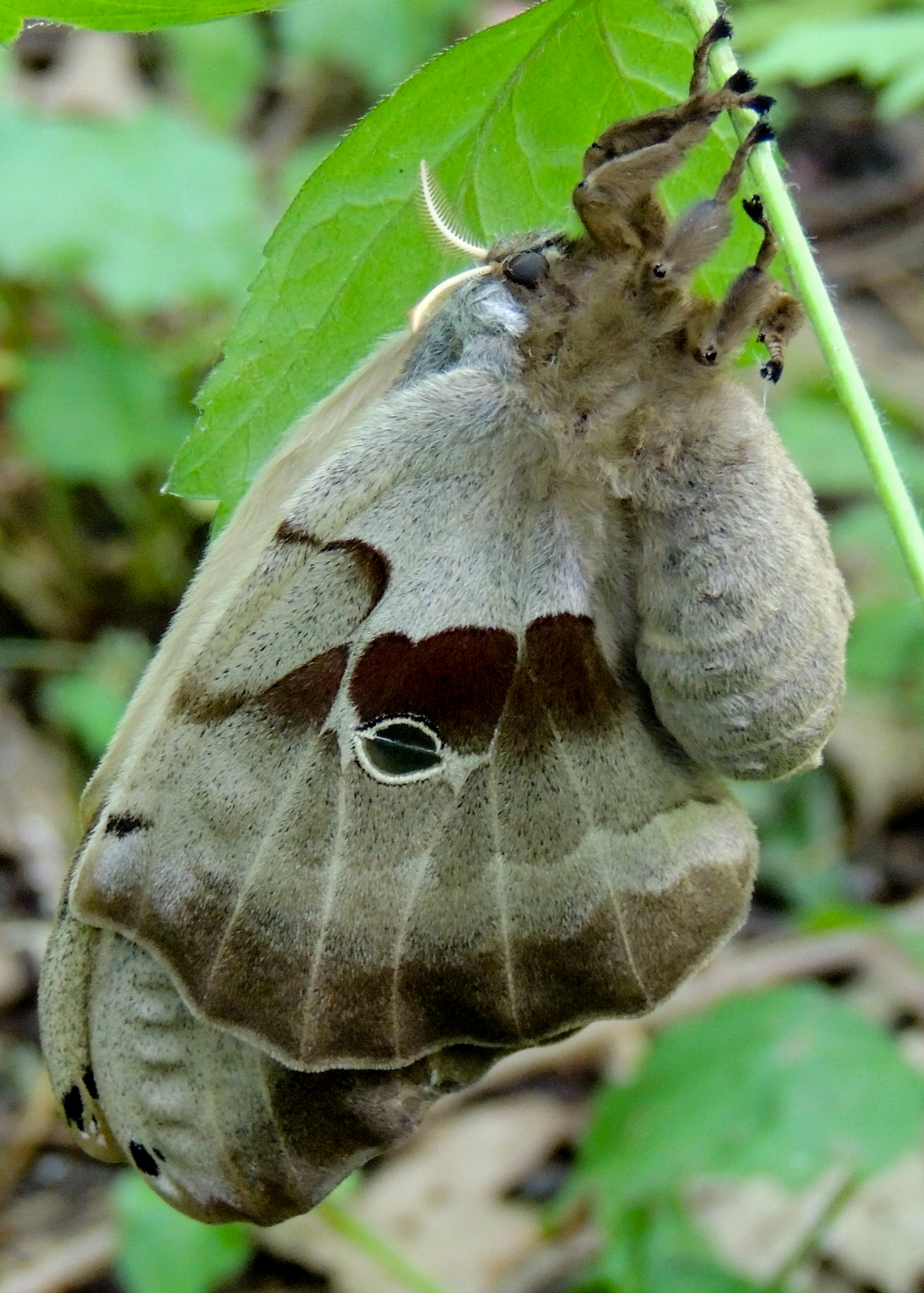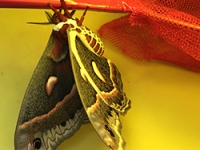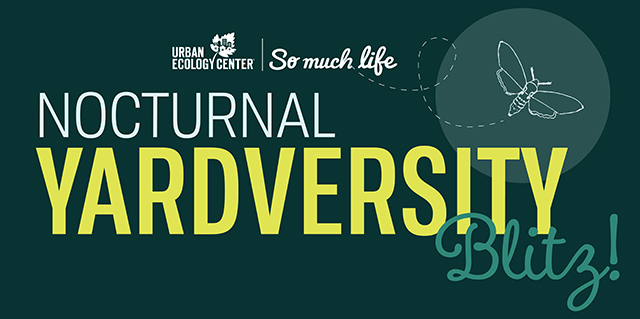With over 10,000 types of moths in North America, there is bound to be plenty to see. Moths have an amazing sense of smell and they are attracted to pheromones that females produce to lure a mate. Some males will travel miles and miles to pursue a mate based on its smell. Who knows, maybe a male will be seeking a female in your very backyard!
We will have a special guest join us throughout the event as they will demonstrate the use of a blacklight in conjunction with a sheet to help illustrate the many moths and insects that will be attracted to the sheet. As we record the nightlife from our yards from around the country, we encourage you to try attracting those nocturnal insects as well. The easiest way to attract them is simply by checking your porch or any other outdoor light. However if you really want to get some great photos to aid in their identification, we recommend that you set up a white sheet (cotton) with an incandescent light shining on it. The light will draw the insects and the sheet will provide a great backdrop to take photos of each individual species. If you want to go even further, we would recommend using a light that projects in the UV spectrum like a blacklight as insects go wild over UV light.
Register here for the Yardversity Nocturnal Theme event!
Collecting data
Using the smartphone app (and/or website) iNaturalist, you will record your findings and observations of the different types of species you find.
iNaturalist is a FREE app designed to record and share observations of any species spotted whether that be plants, animals, or insects by means of snapping a picture with your smartphone. Making an observation is really as simple as taking a photo. Once the photo is taken, iNaturalist automatically makes identification guesses as to what the species you photographed might be. It is then shared and added to an online database that anyone can access. The data collected is also shared with the community so they can help further identify and verify the species. The data collected can then be used to help scientists and researchers keep track of Earth’s biodiversity. Through your participation in the Yardversity Blitz we can contribute to conservation, keep track of the diversity of species around us, and build a connection towards nature.
To share your data collected on iNaturalist with the Urban Ecology Center during Yardversity Blitz you will need to join the Yardversity project.
To do this:
- Download the iNaturalist app to your smartphone
- If you do not have an account set up, create an account
- Once in the app tap “more” on the bottom right of the screen
- Tap “projects”
- Tap the magnifying glass located at the top right of the screen
- Search for “Yardversity”
- Tap “Yardversity”
- Once you tap “Yardversity” tap join.
- After you tap join, you are now part of the project. When you make an observation for this event, there will be a “projects” option at the bottom of your data submission.
- Within that option, please slide the button to the right for the Yardversity Blitz event that should now be visible after joining the project.
- You can now start documenting data for the Yardversity project!

Cercopia moth. Photo by Kim Forbeck.
Yardversity Rules
- The event starts at 8:00 pm CST on Youtube Live and the challenge/data collection will conclude at 10:00 pm. The link to the livestream can be found here.
- Species must be found within your yard or any greenspace that you call home (neighborhood, park, etc.).
- No fossil fuels may be used to get to your site of observation.
- Any plant species can be documented in your yard. This includes ornamentals (non-native plants), natives, and invasives.
- Any living organism can be documented in your yard. This includes trees, insects, fungi, etc.
As always:
- Please stay on trails and never pick, dig up or remove any plants! Trampling of vegetation is illegal according to the Milwaukee County Parks ordinance.
- Please practice - Leave No Trace
- Please abide by CDC social distancing guidelines and maintain a distance of more than 6 feet apart from others if you are outside
- Lastly, have fun!
This is a collaborative challenge, the goal is to find as many species possible!
Yardversity Timeline
8:00 - 8:15 pm: We will go the rules and timeline for the evening all on Youtube Live.
8:15 pm: Yardversity data collection officially begins!
- Head to your backyard or greenspace that you call home and record the abundance of life using iNaturalist
- Need a break from being outside? We will be Youtube Live the entire time talking about various topics relating to the night life. Need help with identifying an insect? Ask us in the chat!
- We will post a link to a video of a nocturnal craft in the Youtube comments as well as in the Yardversity Blitz Facebook event page for kids and families!
9:30 pm: Yardversity data collection/challenge concludes
9:30 -10:00 pm: - Stay with us for a nocturnal themed trivia session to conclude the Yardversity event!
Follow our Yardversity Blitz Facebook event page for updates and so you can share your stories and photos with us throughout the day!
How do I use iNaturalist or eBird?
Never used iNaturalist before? Again, no problem! Check out this blog on what iNaturalist is, how to use it, and how to start submitting your own observations to help contribute to science!
Register here for Yardversity!

Polyphemus moth. Photo by Matt Flower.






